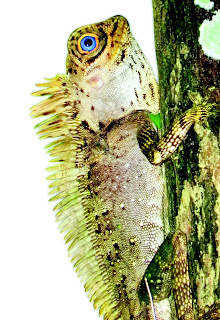Due to the popular demand from members and general public on the Waterbird Identification and Counting Workshop organized by Sarawak Forestry Corporation and Malaysian Nature Society, the organisers have decided to add an additional classroom session on the following day (18th Feb) to allow more people the opportunity to learn more about Waterbirds.
This training workshop is organized as part of the Sarawak Waterbird Survey (SWS), which will equip participants with skills needed to identify and count waterbirds commonly occurring in Sarawak.
The first session will cover diagnostic field characteristics of waders, terns and egrets; the second will deal with practical aspects of how to produce accurate counts of waterbird concentrations from field observations.
The workshop is suitable for anyone wishing to volunteer to take part in field survey work as part of the SWS or involved in the study of waterbirds. No previous experience is necessary.
The workshop is suitable for anyone wishing to volunteer to take part in field survey work as part of the SWS or involved in the study of waterbirds. No previous experience is necessary.
A renowned waterbird expert in the region, Dave Bakewell will give us in-depth knowledge and skill of how we can identify the waterbirds in the field. The workshop will consist of both classroom and field sessions:-
Classroom session
Date :17th Feb 2011 (Thur) – Registration Full
18th Feb 2011 (Fri) – Additional classroom session
Time : 7:30pm to 9:00pm (SHARP FOR BOTH DATES)
Venue: Samajaya Nature Reserve (Stutong Park)
Jalan Setia Raja
Tabuan Jaya
93000 Kuching
Field session
Date : 20th Feb 2011 (Sunday)
Time : 4pm to 6pm
Venue: to be announced during the classroom session
Fee: FREE
Don’t miss this golden opportunity to learn from one of the best waterbird experts in the region.
A comprehensive waterbirds survey along the coastline Kuching and Samarahan areas will be carried out after the workshop from 18 to 23 Feb. Those who are interested to learn more about waterbirds and have more in-depth field exposure are welcome to volunteer in the surveys.
For more detail and registration, please contact Rose Au 016-8909468, email: njau44@yahoo.com or Anthony Wong at 013-8333163, email: antwong@sareaga.com.
COURSE OUTLINE
Session 1: Identification (1 hr 15 mins)
Waders:
Charadriidae:
Grey Plover and Pacific Golden Plover
Greater Sand Plover and Lesser Sand Plover
Kentish Plover and Malaysian Plover
Kentish Plover and Little Ringed Plover
Scolopacidae:
Eastern Curlew, Eurasian Curlew and Whimbrel
Bar-tailed Godwit and Black-tailed Godwit
Great Knot and Red Knot
Common Greenshank, Marsh Sandpiper and Nordmann’s Greenshank
Grey-tailed Tattler, Terek Sandpiper, Common Sandpiper and Common Redshank
Sanderling and Red-necked Stint
Terns
Greater Crested Tern and Chinese Crested Tern
Gull-billed Tern and Caspian Tern
Common Tern and Little Tern
Egrets
Great Egret and Intermediate Egret
Chinese Egret and Little Egret
Cattle Egret and Pacific Reef Egret
Leg-flags
Identification of unusual waterbirds
Session 2: Counting (45 mins)
Preparation
Planning the count
When to count
What to bring
Counting methods
Data recording in the field
Transferring data to Count Coordinator
Safety
About the presenter

Dave Bakewell is originally from the UK. Since first visiting Asia in 1985, Dave has spent almost twenty years studying waterbirds in the region. He has taken part in waterbird surveys of Bangladesh, China, the Philippines and Malaysia.
He is co-author of The Shorebird Studies Manual, published in 1989, and co-editor of the recently published Status of waterbirds in Asia: Results of the Asian Waterbird Census: 1987 – 2007.
After Daved moved to Penang in 1989, he continued to pursue his passion for waterbirds by regular observations at many key sites in the country. As Chairman of the Malaysian Nature Society – Bird Conservation Council Waterbirds Group, he has been involved from the first stages of developing the Sarawak Waterbird Survey, and is excited to play a part in this important project, which will hopefully lead to better understanding and protection of waterbirds in the State.
A sought-after speaker and trainer on the topic of waterbirds, Dave has conducted many training workshops on waterbird identification and monitoring methods in the region, including Singapore, Malaysia, Brunei and China, from beginner to advanced level.
His waterbird blog (
http://digdeep1962.blogspot.com/) is one of the best, if not the best waterbird blogs in the region, documenting detailed accounts of the species found here with specialized tips on waterbird identification.
Photo credits: Dave Bakewell, Yadz Harudin.





















